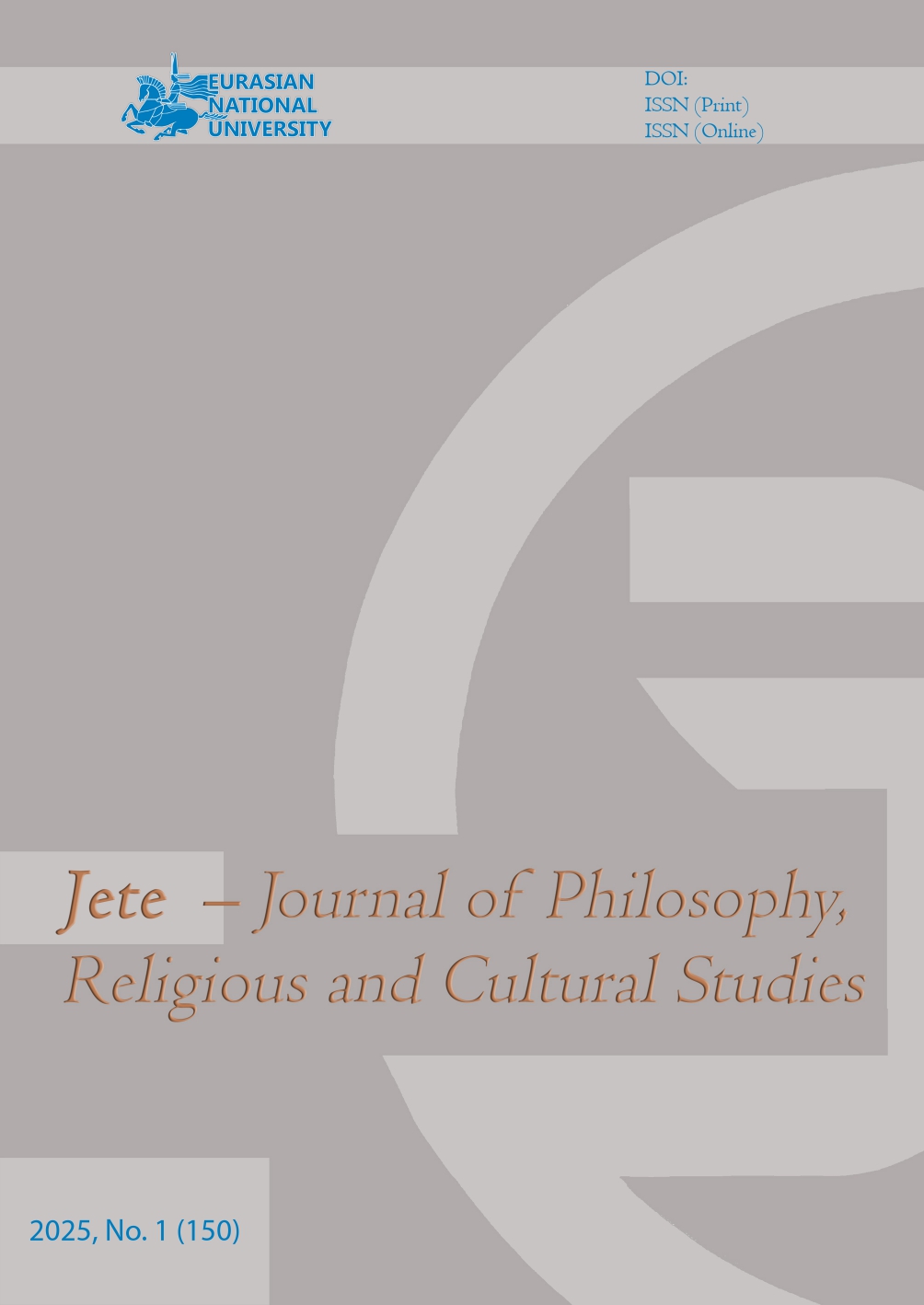The Metaphysical Significance of Baba Tukty Shashty Aziz: Manifestation in Historical Consciousness and Spiritual Space
Views: 143 / PDF downloads: 122Keywords:
worldview, religion, philosophy, history, sacred, Turks, Baba Tukty Shashty AzizAbstract
This work analyzes the image of Baba Tukty Shashty Aziz as a traditional character in Kazakh mythological and epic culture, while also attempting to reframe him as a historical figure who existed in the past. Within the context of history and philosophy, his life path, teachings, and role in the Turkic-Kazakh worldview are examined. The analysis is based on historical sources and data concerning Baba Tukty Shashty Aziz, drawing from research in the fields of history, cultural studies, religion, and philosophy. The historical and philosophical foundations of his image are explored, particularly focusing on the relationship between the nomadic Turkic worldview and Islamic ideas, as well as uncovering the sacred status of this figure with its functional role and significance. One of the goals of the work is to offer alternative interpretations of the views of several researchers who see him as a mythological figure reflecting elements of pre-religious Turkic worldview or as a saintly figure that manifested during the Golden Horde era. His personality is examined not only as a mystical phenomenon within the context of Kazakh spiritual and warrior culture but also as a significant element in epic and genealogical traditions, where the focus is placed on the importance of his role as a spiritual leader. In conclusion, the authors conclude the significance of Baba Tukty Shashty Aziz's personality in the contemporary Kazakh cultural context and worldview, analyzing him through the lenses of demystification and mystification, metaphysical and pragmatic approaches, as well as religious and worldview elements.
Downloads
Downloads
Published
Issue
Section
License
Copyright (c) 2025 Adilbek Nabi, Berik Atash, Sultanmurat Abzhalov, Slushash Tulenova

This work is licensed under a Creative Commons Attribution-NonCommercial-NoDerivatives 4.0 International License.









